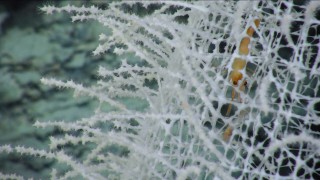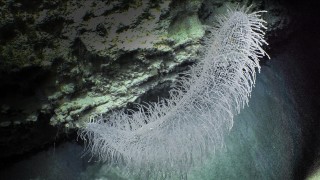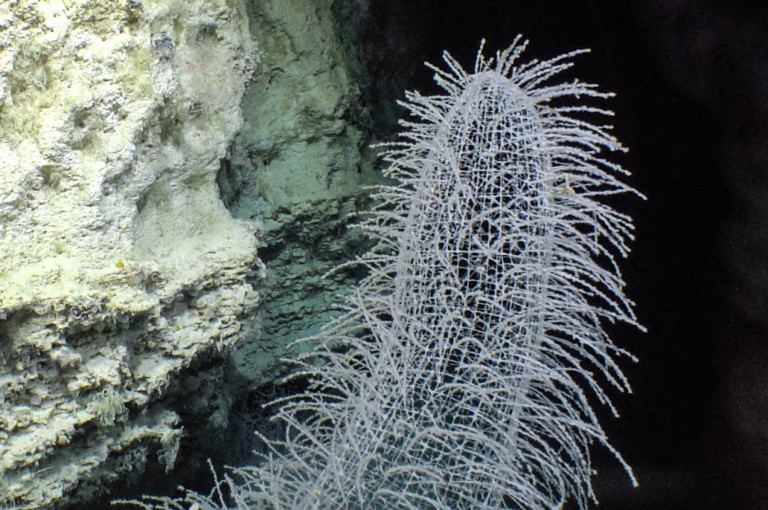
Finding “love”, or a member of the same species to mate with, can be extremely difficult in the vast darkness of the deep sea. Many invertebrates reproduce in the same way as their shallower water counterparts, by releasing large amounts of eggs and sperm into the water column, while others have evolved more unconventional strategies.
A shrimp love story

During our ROV dives into the abyss of the Perth Canyon, we have come across a fascinating shrimp love story. Their love story unfolds in beautifully bizarre glass structures formed by the skeletons of certain deep-sea sponges. Glass sponges are common animals in the deep sea and have a skeleton made of silica, which is the same material used to make glass. These beautiful “glass houses” provide a home for a variety of animals such as brittle stars and shrimp, and often remain intact even after the sponge itself dies.
Glass houses
One particular type of glass sponge, famously called the Venus’ flower basket (Euplectella spp.), is known to house two small shrimps (a male and a female) inside its glass skeleton. Young shrimp pairs enter the sponge when they are small, but eventually become too big to get out. This means that they spend the rest of their lives entrapped inside this “glass house”. Since divorce is not an option, the shrimp better make sure that their chosen partner is indeed Mr. or Mrs. Right. When the shrimp procreate, their offspring are small enough to leave the sponge to find a flower basket sponge of their own. The relationship between the sponge and the shrimp is actually symbiotic in nature: the shrimp clean the inside of the sponge and, in return, receive food and protection from the sponge.

This remarkable deep sea love story may well be one of the most romantic examples of “till death do us part” in the animal kingdom. Not surprisingly, Venus’ flower baskets have been regarded as symbols of eternal love in some Asian cultures such as Japan and are often given as wedding gifts.


